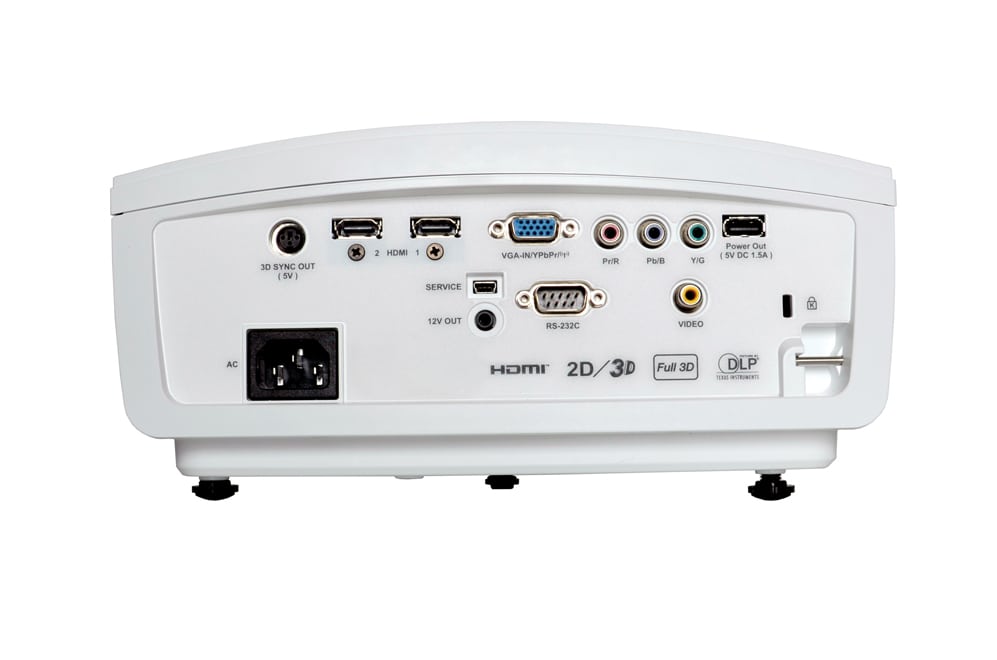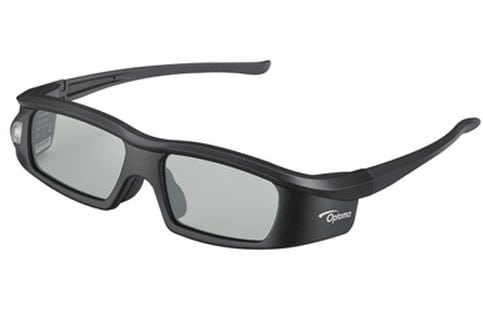HD161X PROJECTOR - SPECIAL FEATURES: HDMI 1.4a, 3D, Smooth motion, Ultra Detail, Dynamic Black (lamp dimming)
HDMI 1.4a
The HD161X has two HDMI ports. That's noteworthy because a number of projectors in this price range and below offer only one. If you have an AV receiver that can switch HDMI 1.4a compatible output, then you probably only need one, but for the rest of you...
The important point about the 1.4a standard, is that it is needed to support Blu-ray 3D. Considering that 3D in terms of HDTV is mostly a couple of channels, and even then, movies are usually Pay Per View, those of us who thoroughly enjoy 3D buy 3D Blu-ray discs. For example, I'm fully enjoying Guardians of the Galaxy in 3D, one of my most recent additions to my 50+ 3D movie collection.
Many of today's sub-$2000 DLP projectors for home, and perhaps more than half of those under $1000 lack the HDMI 1.4a compatibility. Note, that there are work arounds with external processing, but I'm sure everyone interested would prefer that ability built in.
[sam_pro id=1_20 codes="true"]
 Click Image to Enlarge
Click Image to Enlarge3D Capabilities
As just pointed out, thanks to HDMI 1.4a inputs, the HD161x is fully compatible with Blu-ray 3D. It also supports the usual standards for HDTV broadcast.
Also of note, for those who want to have "fun", the HD161x also offers 2D to 3D conversion. Now don't expect 3D converted from 2D by a projector to rival what is accomplished in the studios, but it can be fun. Myself, I have tried, but gave up on watching 2D movies converted to 3D. There are enough minor artifacts to cause some things to look wrong. On the other hand, it is sometimes fun to take some home videos and view them in 3D. That's a use I can appreciate, since my brain has turned off it's most critical functions for home videos. After all, I shoot them with my iPhone, which does fine but is hardly high end commercial quality.
 Click Image to Enlarge
Click Image to Enlarge3D quality, based on viewing Guardians of the Galaxy, plus a smattering of Hugo, Thor, MIB III, etc., was very nicely clean as expected from a DLP light engine. Single chip DLP projectors' DLP mirrors switch faster than LCD or LCoS, and as a result are essentially crosstalk free (unless designed intentionally). (By extending the time the left and right lenses are open, you get a brighter image, but that would add some crosstalk. Color is never exceptional in 3D, because the usual issue is brightness, so one tends to choose the brightest 3D mode, at the expensive of color accuracy, to get more brightness.
Note that Optoma does not provide any of their DLP-link 3D glasses with the projector. You'll have to shell out for them separately. Therefore I recommend two things. First, consider the RF emitter, which will produce superior 3D to DLP-link that's built in. And second, you'll do a lot better, with lots of choices (including size, and weight), and lower prices if you shop for 3rd party 3D glasses. That's true whether you go DLP-Link or RF.
Smooth motion - aka Pure Motion
I generally avoid using trademarked names in my writing, or at least use them minimally, so that things make sense when reading reviews from multiple manufacturers.
Smooth motion is the term used to describe many companies' processing to get rid of 3:2 pull-down judder, as well as judder on standard 24 fps movies. It also smooths out high speed motion found in sports and action flicks (well really most content).
The HD161x calls their smooth motion Pure Motion, part of the Pure suite of features. There's an off setting, and three levels of on. At the lowest level the amount of smoothing is not a whole lot, thus fine for sports and much of TV. Still, it's more than I recommend for movies, as smoothing out the motion often changes "the director's intent." (the best examples of that include the Bourne movies, where the camera seems to always be jerking around, giving the enhanced sensation of action. Smooth motion would tend to minimize that affect, and thus lower the sense of action.
The two higher settings increase the processing but unlike many projectors doing the same, even the high setting doesn't generate any significant, visible artifacts. In this regard, I give their smooth motion at high setting the advantage over projectors from Epson, BenQ, and others. Still, at the end of the day, a smooth motion solution is a fancy extra, that I consider a nice option to have, but not near as important to most of us, as, for example, superior black level performance.
Ultra Detail
Ultra Detail is also part of the Pure suite of image processing. It's job is to create a seemingly sharper, more detailed image. There are three settings plus off.
On offers the least extra enhancement, and the difference is pretty subtle between it, and off. Moving to HD+ you get a larger jump, but still not a dramatic difference. Finally, there's the User mode. You can adjust it from 0% up to 130% in increments of 10%. The 100% setting seems to match HD+, so note that you can get more perceived sharpness by going to User, and 110% through 150%.
The full range of settings from off, to 150% has still relatively minor affect on the image compared to some more expensive projectors with what are probably more sophisticated processing algorithms. I include in that batch projectors starting under $2000 though. Consider the Epson 4030 and all the current Epson UB series to offer far more sharpness improvements. Add to that the Sonys with their Reality Creation, and so on.
[sam_pro id=1_20 codes="true"]
Still, the enhancement provided, while subtle, comes without a lot of baggage (artifacts). Better to have some of this enhancement, than none at all.
Enhanced black levels via lamp dimming - Dynamic Black
If you've got the right room - one you can virtually fully darken for movie viewing, then you really want a projector that can take advantage. Perhaps the biggest difference between a great $1000 to $1500 projector for home and the great ones in the $2000 and up range, is how well they look on very dark scenes. On medium and bright scenes, differences are often minor. On a very dark scene, though the term "night and day" almost applies ("late night vs early dusk" works well)
This Optoma like most, goes a different path than most competitors. They claim 40,000:1 contrast (on/off) which is pretty good for the price. But, the numbers don't tell this story. Most of the competition use dynamic irises to achieve their lowering black levels goals. Optoma instead uses lamp dimming. The concept is the same, but the issue is that this Optoma's action isn't as smooth as most projectors with refined dynamic irises. Oh, it lowers the blacks nicely enough. Not the best around the price, but an improvement.
More to the point, there are times sometimes right after a scene changes, but it can be mid-scene as well, where the adjustment snaps on rather late instead of being very smooth. Scene changes, the new scene starts, and maybe a second later, the image might brighten or dim in a visible step due to the lamp dimming, adjusting for the change in the image.
Problem is, it's occasionally noticeable. Casual observers (family and friends) might hardly notice, but if you are an enthusiast, you probably will. It certainly annoys me. In fairness, Optoma's doing a much better job of limiting the visibility compared to 4-5 years ago, when I really slammed them for this issue. Still, for me, I don't want to see that occasional (but hardly infrequent) bump up or down in the scene's brightness. Optoma needs to further refine it's algorithms, at least to make me happy. As with many other Optoma's, for myself, I would in most cases when viewing movies, turn off Dynamic Black. Note that Dynamic Black is either on or off, no user adjustments. The good news. This Optoma has extremely good black level performance for the price, even with Dynamic Black turned off!



